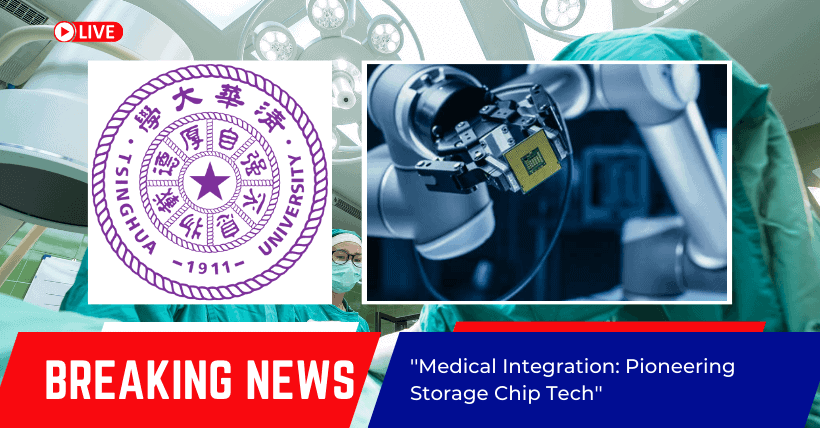In a world where data is king, the loss of critical information stored on integrated storage chips has been a long-standing challenge. Forensic scientists and data recovery experts have grappled with traditional methods that often entail tedious and risky procedures. However, a groundbreaking technological advancement is poised to revolutionize data recovery, promising to replace these dated techniques and find applications far beyond the realm of digital forensics. Tsinghua University has unveiled an integrated storage chip surgery robot, marking a historic moment in the tech world. This robot’s innovative “diagnosis and treatment integration” approach is set to change the game in data recovery, clinical surgery, microelectronics processing, cultural artifact restoration, and more.
01
The Challenge of Data Recovery from Integrated Storage Chips
Globally, data recovery from integrated storage chip devices has been an ongoing challenge. Traditional methods have involved the laborious process of manually removing the chip’s insulation layer and accessing the device’s printed circuit board. While these methods have been employed for years, they are far from ideal. Not only are they time-consuming, but they also carry the risk of damaging crucial storage components, which can lead to irreversible data loss. The need for a more efficient and automated solution has never been more apparent.
02
Tsinghua University’s Cutting-Edge Innovation
A transformative solution to the age-old problem of data recovery has emerged from the hallowed halls of Tsinghua University. Professor Xue Ping and his team from Tsinghua’s Department of Physics, in collaboration with the Ministry of Public Security’s Identification Center, have developed a surgical robot technology that blends robotics intelligence with optical coherence tomography imaging and laser etching and ablation techniques. This fusion of cutting-edge technologies allows the robot to perform delicate surgery on damaged integrated storage chips, breathing new life into data recovery.
02
The “Diagnosis and Treatment Integration” Approach
At the heart of this groundbreaking technology is the concept of “diagnosis and treatment integration.” The surgical robot operates in two distinct phases: diagnosis and treatment. The initial step is to identify compromised areas within the chip’s data storage. Optical coherence tomography imaging technology, a high-resolution 3D tomographic imaging system originally used in medical diagnostics, plays a pivotal role. This innovative technology provides unparalleled insights into the chip’s condition, automatically analyzing factors such as scratch depth, burn severity, and crease damage areas. What sets it apart from traditional radiation-based X-ray imaging techniques is its use of low-power near-infrared light, which eliminates any potential harm to operators, equipment, or stored data.
03
The Role of Optical Coherence Tomography Imaging
Optical coherence tomography imaging is a game-changer in the world of data recovery. This technology enables detailed 3D imaging, revealing the intricate structure of integrated storage chips. By analyzing the chip’s condition at a microscopic level, it can identify areas of damage, making it an invaluable tool in the diagnostic phase of the procedure.
04
Laser Ablation and Precision Surgery
Inspired by medical practices where the goal is to diagnose and treat in one seamless operation, the Tsinghua team took the integration concept further. They combined the optical coherence tomography imaging system with laser ablation equipment, resulting in the creation of an integrated storage chip surgery robot. Guided by the 3D images generated by the optical coherence tomography technology, the robot is capable of selectively and accurately removing the chip’s insulation layer in target areas.
This precision surgery not only minimizes the risk of further damaging the device but also streamlines the welding process. As a result, data recovery efficiency reaches unprecedented levels. Traditional data recovery methods pale in comparison to the speed and accuracy that this surgical robot offers.
05
Wider Applications and Promising Prospects
The implications of this integrated storage chip surgery robot technology extend far beyond data recovery. One notable area where this innovation could make a significant impact is clinical surgery. During medical procedures, especially those involving tumor removal, real-time data is crucial. The robot can accurately and real-time identify tumor boundaries, aiding surgeons in precise localization and removal of cancerous tissues. By doing so, it minimizes damage to surrounding healthy tissues, significantly improving patient outcomes.
06
Acknowledgment in “Nature Communications”
The remarkable achievements of Tsinghua University’s integrated storage chip surgery robot technology have garnered international recognition. Their work was recently published in the prestigious journal “Nature Communications.” Experts in the field have hailed this technology as a potential disruptor of traditional electronic data forensics methods. The potential for unprecedented improvements in data recovery efficiency has the tech world buzzing with excitement.
In conclusion, Tsinghua University’s integrated storage chip surgery robot represents a monumental leap forward in the field of data recovery. Its innovative “diagnosis and treatment integration” approach, coupled with the power of optical coherence tomography imaging and laser ablation techniques, has the potential to reshape data recovery processes, not only in the realm of digital forensics but also in clinical surgery and other domains. This technological breakthrough is a testament to human ingenuity and the relentless pursuit of excellence.




